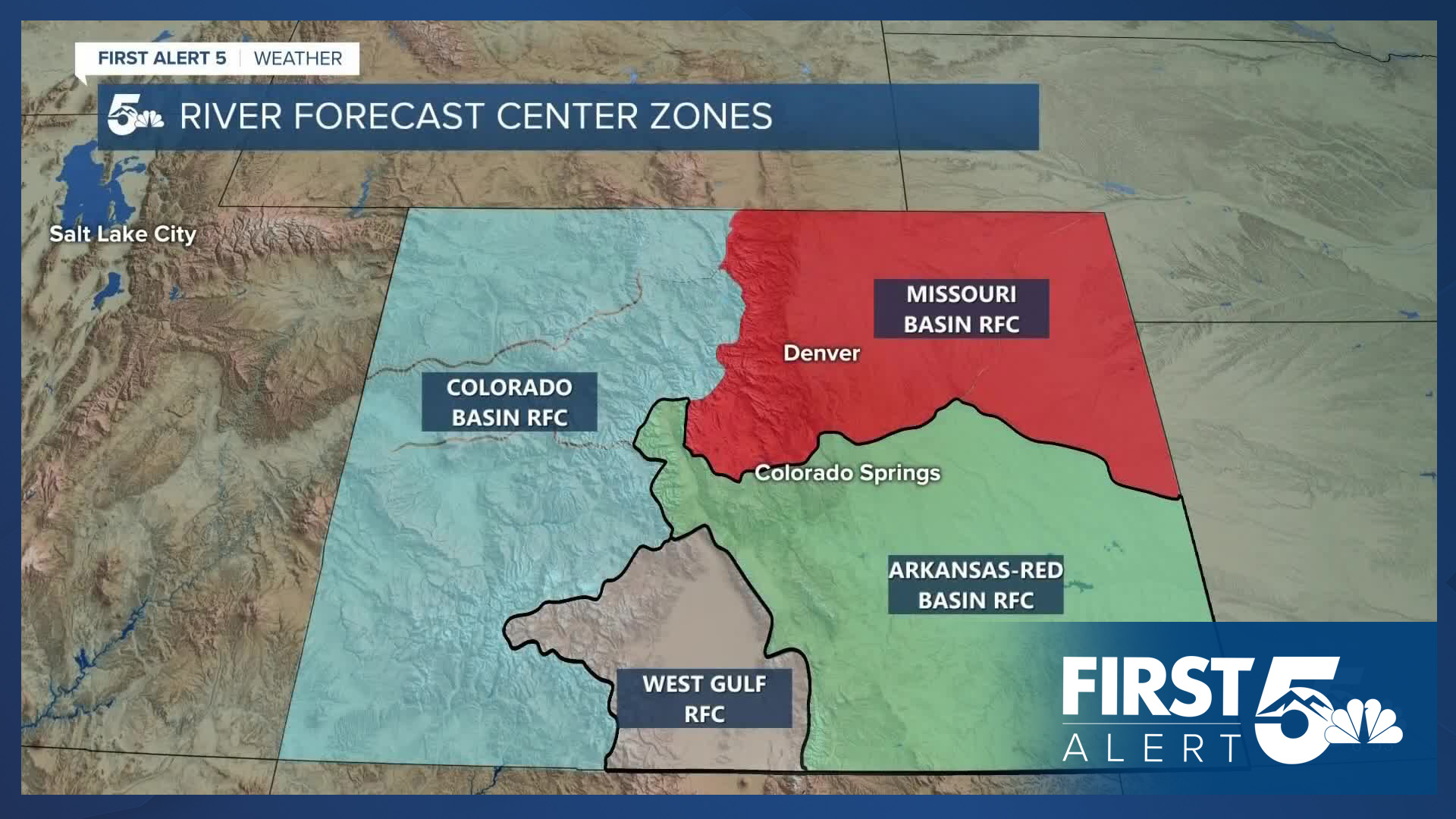The amount of rain required to produce flash flooding varies by day, and by location. This is why - for example - an inch of rain in Manitou Springs can prompt a Flash Flood Warning, while 2" in eastern Pueblo or Security-Widefield doesn't.
Forecasting flash flooding is a complex science requiring many types of measurements, and a local understanding of specific terrain features.
FLASH FLOODING BASICS
A flash flood is a sudden flooding of normally dry, typically low-lying areas
Flash floods occur when the amount of rain that falls over an area in a certain amount of time, is more than than ground can absorb.
The extra water flows on top of the ground toward low points in the terrain.
The National Weather Service forecasts flash flood risk from large centralized River Forecast Centers (RFCs) across the country. Colorado is covered by the
- Colorado Basin
- West Gulf
- Missouri Basin
- Arkansas-Red Basin
The latter of which covers southern Colorado.
Forecasting flash floods starts with measurements and data. A network of
- River gauges
- Rain gauges
- Radar sites - with estimated rain totals for the last 1-7 days
- Soil moisture sensors
all monitor and provide data to the centralized forecasting centers.
HOW THE GROUND IMPACTS FLOOD RISK:
SOIL MOISTURE
There's a "sweet spot" when it comes to soil moisture.
- If the ground is already wet, it can't absorb much more water: high flood risk.
- If the ground is -very- dry, it forms a crust on the surface that resists water absorption: high flash flood risk.
- If the ground is dry, but not extremely dry, it can absorb a lot of water easily: low flash flood risk.
TYPE OF TERRAIN
- Steep mountain slopes can flood with less rain than flat ground.
- Burn scars act like very dry ground: they resist water absorption, raising the risk of both flash floods and land/mudslides.
- Urban areas with paved roads also need less rain for flooding. As you know - concrete doesn't absorb water.
HOW RAINFALL RATE IMPACTS FLOOD POTENTIAL
How long it takes the rain to fall also plays a role. The ground can't absorb as much water in 1 hour as it can in 3-6 hours. But...it's a bit more nuanced than that.
As the ground gets wetter...the amount of additional water it can hold goes down. The ground can slowly disperse some of this water which is why over time it can hold more than it can in short time periods. But it's not a 1:1 ratio. So the ground can't hold 6 times more water in 6 hours than it can in 1 hour.
But the number is still higher with more time. So 1" of rain may flood Manitou Springs in an hour, but 2" of rain in 3 hours may not.
All of the sensor measurements and observations are processed by River Forecast Centers which then provide localized flash flood forecast maps that are used by local meteorologists - NWS, media, and private industry.
Because there is a strong dependence on what type of ground is getting rain (a city, versus a forested mountain, versus open plains), and how much rain has recently fallen in that area - the rainfall required to cause a flash flood varies dramatically by location.
This is ultimately why a city like Security-Widefield could get a flash flood with an inch of rain in an hour, while parts of eastern Pueblo may need more than 2 in that same hour, on the same day - to get the same flooding. It's that specificity that also is why it's important to take Flash Flood Warnings seriously even if it doesn't seem like it's rained that much. The warning is localized to factor in all of these variables - there's no set amount of rain that will always or will never produce a flood.
So the next time it pours for two hours and you don't get a warning, or it pours for 30 minutes and you do, now you know why.
____
Have a question or story idea you would like the First Alert 5 Weather team to consider? Email: weather@koaa.com
Watch KOAA News5 on your time, anytime with our free streaming app available for your Roku, FireTV, AppleTV and Android TV. Just search KOAA News5, download and start watching.




